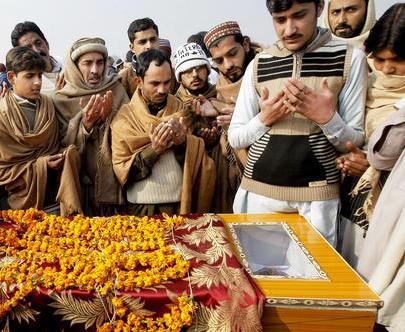With the January 20 terror attack on a university in northern Pakistan and militant groups splintering into breakaway factions, the fight against terrorism in South Asia will grow more complicated in the near future.
Near the city of Peshawar, armed militants stormed Bacha Khan University in the northwestern province of Khyber-Pakhtunkhwa. Pakistani security forces battled for several hours, killing the four attackers, but the terrorists had gunned down more than 20 students, professors and others.
In Khyber-Pakhtunkhwa Province, a school attacke, in December 2014. Terrorists assaulted the school, run by the military in a suburb of the provincial capital Peshawar, killing about 150 people, including 132 children.
A regional leader of the Peshawar area extremist militant group known as the Tehrik-e Taliban Pakistan (the Taliban movement of Pakistan) claimed responsibility for both the attacks.
However, a TTP spokesman, calling the incident “un-Islamic,” stressed that the attackers, belonged to a breakaway faction, and would be ‘tried’ in a TTP court. This underscored the reported internal conflicts within the TTP recently.
In October 2012 the TTP sparked worldwide outrage by shooting Pakistani schoolgirl and human rights activist Malala Yousafzai. That attack sparked worldwide revulsion and led to her being awarded the Nobel Peace Prize in 2014. The TTP appears to be a different organization from the Taliban, the armed anti-government force in Afghanistan, and it is believed that there is no military cooperation between the two groups.
With the insufficient military control around the border between Afghanistan and Pakistan, however, it is believed that the members of the two groups have been visiting each other. After the Pakistani government stepped up its campaign to wipe out the TTP in June 2014, TTP leaders have reportedly begun crossing the border and going into hiding in Afghanistan.
On Jan. 21, the day after the university assault, a spokesman of the Pakistani army said that analysis of the call logs of mobile phones carried by two of the four dead attackers made it clear that they had committed the assault on instructions from Afghanistan. The Pakistani army chief, Gen. Raheel Sharif, then phoned Afghan President Mohammad Ashraf Ghani to ask for his cooperation in investigating the attack.

TERROR FACTORS Two crucial factors have become clear — the TTP is divided and some factions act at their own discretion; and terror attacks in Pakistan can be launched on orders from Afghanistan. This will make it more difficult to improve security within Pakistan. The low capability of the Afghan government to maintain order has been conspicuous since U.S. combat troops pulled out of the country in December 2014.
Meanwhile, the Taliban in Afghanistan has reportedly been suffering internal divisions since the death of supreme leader Mullah Omar last summer. Mullah Akhtar Mansour had succeeded him. Last July, the Afghan government and the Taliban had their first direct talks, raising hopes that they will prove to be the first step toward peace. With hard-line factions within the Taliban opposing the dialogue with the government, Mullah Mansour is beginning to distance himself from the direct talks.
The weakened authority of the leadership of both the Afghan Taliban and the Pakistan TTP makes it harder for the Afghanistan or Pakistan government to contact the Taliban or the TTP behind the scenes or make progress with anti-terrorism efforts. Furthermore, the Islamic State group(ISIS) is beginning to penetrate into the two countries. While the U.S. and China have begun engaging in the restoration of order in South Asia, the situation surrounding militant groups in the region is worsening.
[Analysis based on a report by Yuji Kuronuma]


